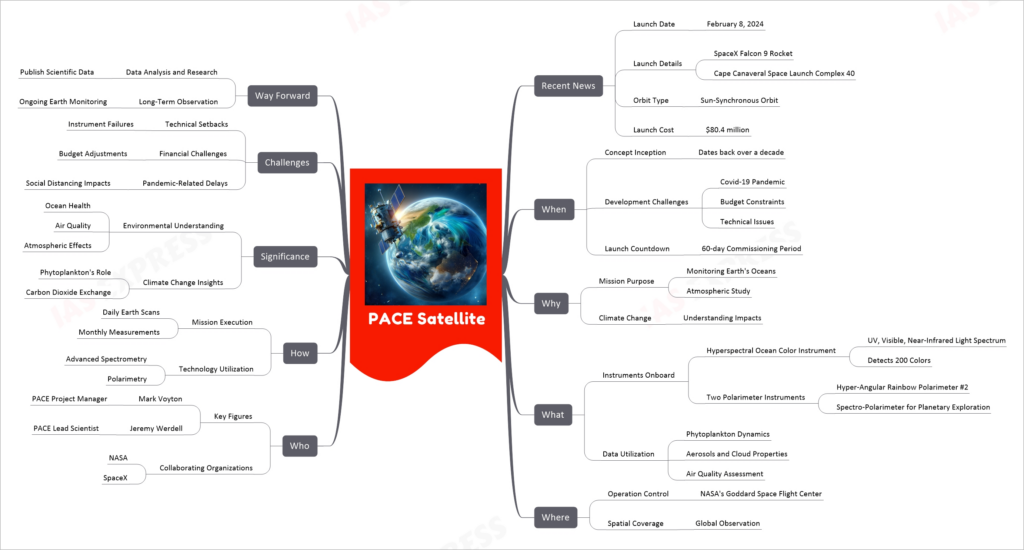PACE Satellite

The PACE (Plankton, Aerosol, Cloud, ocean Ecosystem) satellite is a notable mission by NASA aimed at understanding and monitoring the Earth’s ocean and atmospheric conditions. Launched on February 8, 2024, aboard a SpaceX Falcon 9 rocket from Cape Canaveral Space Launch Complex 40, PACE marks a significant stride in climate research. The mission focuses on the intricate relationships between phytoplankton, aerosols, clouds, and other environmental elements.
PACE’s journey to launch was marked by various challenges, including technical issues and budget constraints exacerbated by the COVID-19 pandemic. Despite these hurdles, the mission, managed by NASA’s Goddard Space Flight Center, successfully advanced through rigorous testing and integration phases.
In orbit, PACE will observe the Earth’s atmosphere and ocean surface, enhancing our understanding of phytoplankton dynamics and their environmental interactions. This satellite is equipped with advanced instruments, including a hyperspectral ocean color instrument and two polarimeter instruments, Hyper-Angular Rainbow Polarimeter #2 and Spectro-polarimeter for Planetary Exploration. These instruments will provide detailed data on ocean ecology, atmospheric aerosols, cloud properties, and air quality at various scales.
PACE represents a continuation and advancement of over two decades of NASA’s satellite observations related to ocean biology, atmospheric aerosols, and climate studies. The mission aims to provide invaluable data for understanding and addressing climate change challenges.
Overall, PACE is a testament to the persistence and perseverance of the scientific community in advancing our knowledge of Earth’s complex systems, despite facing significant obstacles along the way.
If you like this post, please share your feedback in the comments section below so that we will upload more posts like this.

